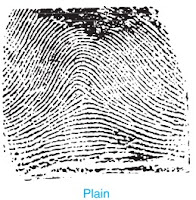The Nobel Prize in Chemistry 2020 Winners: Emmanuelle Charpentier and Jennifer Doudna
The Nobel Prize 2020 for Chemistry was shared by two women scientists Jennifer Doudna and Emmanuelle Charpentier. They bagged Nobel Prize 2020 for Chemistry "for the development of a method for genome editing". The discovery of the sharpest tools CRISPR/Cas9 will make it easier to edit genes and may be used to cure inherited diseases.
Why Jennifer Doudna and Emmanuelle Charpentier awarded Nobel Prize 2020 for Chemistry?
 |
| Emmanuelle Charpentier |
 |
| Jennifer Doudna |
When a virus attacks a body, "Memory cells" present in the body quickly produce relevant antibodies to minimize the chances of repeat infection. In a similar way, CRISPR is a part of bacteria's immune system that helps them in identifying the enemy virus.
When they identify an enemy virus, the bacteria produce customized RNA, which is required to translate DNA into protein, obtained from CRISPR libraries. This also has Cas genes that are used to produce Cas-9 enzymes. A Cas-9 enzyme can be used to slit the DNA of the enemy virus and destroy it.
How CRISPR/Cas9 can be used to edit genomes?
CRISPR/Cas9 tool can change the DNA of organisms like animals, plants, and microbes with high accuracy and precision. Emmanuelle Charpentier (Director of Max Planck Institute for Infection Biology, Berlin) had studied Streptococcus pyogenes, a species of bacteria that can cause diseases like pharyngitis, tonsillitis, and scarlet fever.
Dr. Charpentier's works show that a previously unknown molecule "tracrRNA", is a part of bacteria's ancient immune system. She published her discovery in 2011. In 2011, she did a collaboration with biochemist Jennifer Doudna (Professor at the University of California, Berkeley) for further research.
The official website of Nobel Prizes states that "Together, they succeeded in recreating the bacteria's genetic scissors in a test tube and simplifying the scissors' molecular components so they were easier to use".
The note further adds "In their natural form, the scissors recognise DNA from viruses, but Charpentier and Doudna proved that they could be controlled so that they can cut any DNA molecule at a predetermined site. Where the DNA is cut it is then easy to rewrite the code of life".
How the CRISPR/Cas9 tool different from other editing systems?
There are other genome editing scissors, like TALENs and Zinc-Finger Nucleases that can do similar work but the CRISPR/Cas9 tool was developed by Charpentier-Doudna are more reliable and easy to use.
CRISPR/Cas9 gained wide publicity from researchers and commercial players in less than a decade, but in past few years, scientists have been able to make large insertions.
The commercial potential of the discovery of CRISPR/Cas9 genome editing scissors is so huge that within years of its discovery, there was a tussle between the University of California and Massachusetts Institute of Technology's Broad Institute over the ownership of the intellectual property rights.
Dr. Feng Zhang of the Broad Institute had developed a way to transfer the system in animal cells, whereas Dr. Doudna's patent paper covered the process more generally. Dr. Zhang's patent was approved much before Dr. Doudna's patent paper. The patent dispute is still going on.
Is there a possibility of the CRISPR/Cas9 tool being misused?
The most unethical use of CRISPR/Cas9 was done in 2018 by a Chinese researcher He Jiankui. He claimed that he had used the CRISPR/Cas9 tool to create 'gene-edited twins' named Lula and Nana through in-vitro fertilization. He used this tool when babies were in embryos to edit the CCR5 gene which in its modified form would protect the babies from HIV.
HIV uses the CCR5 gene to infect cells and the modified version of the gene would close the way against such entry. He Jiankui was highly criticised and sentenced to three years in jail and stripped of his position at Shenzhen University.
So, we can't rule out the fact that this technology would not be misused. CRISPR/Cas9 system can be used in labs but it is not so much precise to be used on humans at this preliminary stage.
References: https://www.nobelprize.org/prizes/chemistry/2020/summary/



